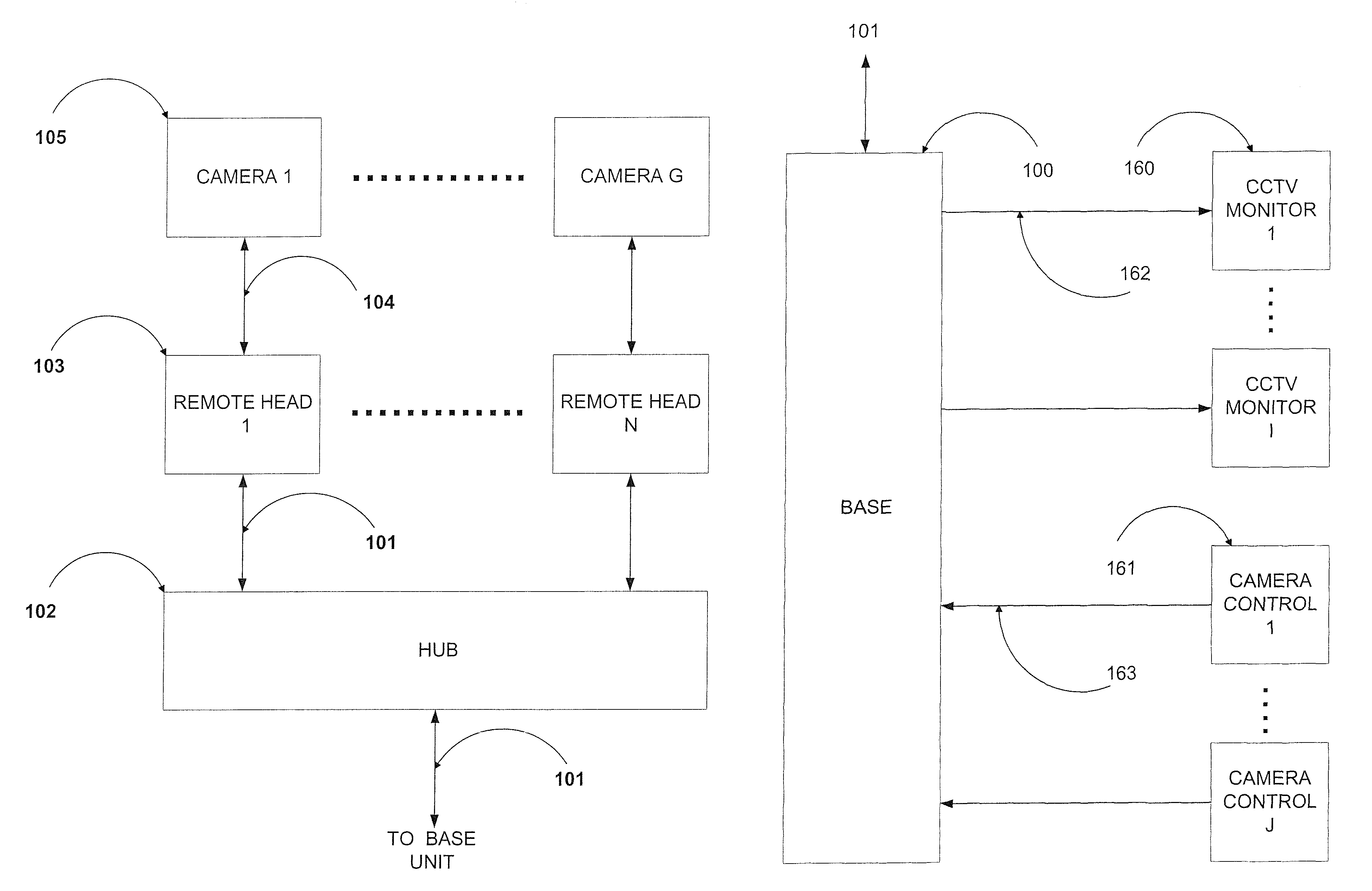System for communication of video, audio, data, control or other signals over fiber
a fiber optic and fiber optic technology, applied in the field of communication systems, can solve the problems of large cost, large cable size and weight, noise or distortion, etc., and achieve the effect of little or no overhead
- Summary
- Abstract
- Description
- Claims
- Application Information
AI Technical Summary
Benefits of technology
Problems solved by technology
Method used
Image
Examples
Embodiment Construction
[0041]The present invention in an illustrative embodiment to be described below provides a system for multiplexing and digital transmission of signals from remote video sources, such as cameras, bidirectional audio, and for bidirectional digital serial communication and control of these remote sources, such as camera pan / tilt / zoom, over fiber optic cable, for surveillance, broadcast television, or other applications. It is to be appreciated, however, that the invention can be implemented in a wide variety of other system configurations, in order to meet the particular needs of a given application.
[0042]The system can be configured as multiple remote video interfaces, which connect each camera or other video source, via a single fiber optic cable, over a distance of many kilometers (e.g., up to 20 kilometers or more), to a central hub. Up to N remote interfaces can be accommodated, where N and other variables referred to herein are arbitrary numbers that can take on any desired value...
PUM
 Login to View More
Login to View More Abstract
Description
Claims
Application Information
 Login to View More
Login to View More - R&D
- Intellectual Property
- Life Sciences
- Materials
- Tech Scout
- Unparalleled Data Quality
- Higher Quality Content
- 60% Fewer Hallucinations
Browse by: Latest US Patents, China's latest patents, Technical Efficacy Thesaurus, Application Domain, Technology Topic, Popular Technical Reports.
© 2025 PatSnap. All rights reserved.Legal|Privacy policy|Modern Slavery Act Transparency Statement|Sitemap|About US| Contact US: help@patsnap.com



